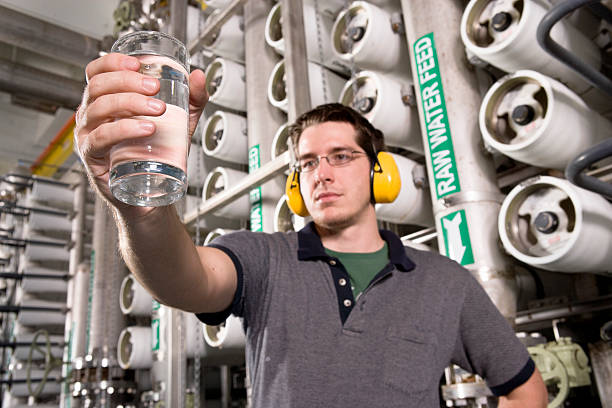Dibromochloromethane

Dibromochloromethane is a colorless to yellow, heavy and nonflammable compound. Safe Home offers a few kits that provide drinking water testing for dibromochloromethane in water supplies.
Parameter Type: Drinking Water Testing for TTHM'sVolatiles
Parameter Name: Dibromochloromethane
What it is and Where it Comes From:
Dibromochloromethane is a colorless to yellow, heavy and nonflammable compound with formula CHBr 2Cl. It is a trihalomethane. The substance has a sweet odor. Small quantities of dibromochloromethane are produced in ocean by algae. Dibromochloromethane was formerly used as a flame retardant and as an intermediate in chemicals manufacturing. Today it is used only as a laboratory reagent. Dibromochloromethane is also a disinfection byproduct, formed by the reaction of chlorine with natural organic matter and bromide ions in the raw water supply. Drinking water testing gives you several benefits like peace of mind, identifying contaminants in your water, and insight into health concerns. Safe Home offers Laboratory drinking water testing kits for dibromochloromethane, allowing you to collect your water sample and ship it directly to our EPA-Certified Laboratory. This platform of drinking water testing for dibromochloromethane will give you an accurate level based on the lowest level of a parameter our instruments can detect (Method Detection Level). Safe Home drinking water testing for TTHMs can be used for city and well water supplies. Drinking water testing should be done any time you notice a significant change in your water quality.
Health Effects:
Some studies in animals indicate that exposure to high doses of dibromochloromethane may also lead to liver and the kidney injury within a short period of time. Exposure to low levels of dibromochloromethane do not appear to seriously affect the brain, liver, or kidneys. Other animal studies suggest that typical dibromochloromethane exposures do not pose a high risk of affecting the chance of becoming pregnant or harming an unborn baby. However, studies in animals indicate that long-term intake of either dibromochloromethane can cause liver and kidney cancer. Although cancer in humans cannot be attributed to these chemicals, it is an effect of special concern, since many people are exposed to low levels of dibromochloromethane in chlorinated drinking water
Solutions to Contaminant Levels:
You have completed the drinking water testing process, what Is the next step? A filter with granular activated carbon (GAC) is a proven option to remove certain chemicals, particularly organic chemicals, from water. GAC filters also can be used to remove chemicals that give objectionable odors or tastes to water such as hydrogen sulfide (rotten eggs odor) or chlorine. Reverse osmosis is a process that removes foreign contaminants, solid substances, large molecules, and minerals from water by using pressure to push it through specialized membranes. Here’s how reverse osmosis works. Unlike osmosis, which is a passive process, reverse osmosis requires external force (pressure) to work. Pressure is applied to a highly concentrated solute solution, such as salt water, to pass through a membrane to a lower concentrate solution. The membrane allows water to flow through but blocks out larger molecules, like contaminants. The reverse osmosis process leaves higher concentrations of solute on one side and only the solvent, or freshwater, on the other. Who do I need to contact to find out more information about water quality in my area? Every community water supplier must provide an annual report to its customers, known as a Consumer Confidence Report (CCR). The report provides information on your local drinking water quality, including the water’s source, contaminants found in the water, and how consumers can get involved in protecting drinking water. How often does the local public water system preform drinking water testing? Frequency of drinking water testing depends on the number of people served, the type of water source, and types of contaminants. Certain contaminants are tested more frequently than others, as established by the Safe Drinking Water Act. You can find out about levels of regulated contaminants in your treated water for the previous calendar year in your annual Consumer Confidence Report (CCR).


